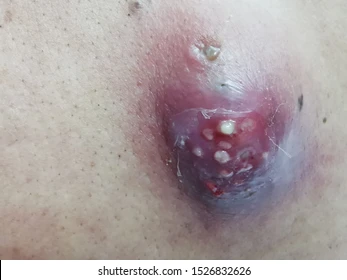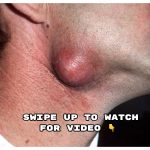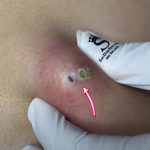What Is Cystic Acne and How Is It Treated?
Cystic acne is one of the most severe forms of acne, characterized by large, inflamed, painful lesions that form deep beneath the skin. Unlike typical pimples, cystic acne doesn’t always come to a head and often leaves behind scars if not treated properly.
🔍 What Causes Cystic Acne?
Cystic acne forms when:
-
Pores become clogged with excess sebum (oil), dead skin cells, and bacteria.
-
Inflammation occurs deep in the skin, creating swollen, tender cysts.
-
Hormonal fluctuations increase oil production (common during puberty, menstruation, or due to conditions like PCOS).
-
Genetics can also play a significant role.
🔬 What Does Cystic Acne Look Like?
-
Large, red, and painful bumps under the skin
-
Often do not form a visible whitehead
-
Commonly found on the face, chest, back, and shoulders
-
Can linger for weeks or months
-
Often leave dark spots or scars
🧴 How Is Cystic Acne Treated?
1. Topical Treatments (for mild to moderate cases)
-
Retinoids (e.g., adapalene, tretinoin): Help unclog pores and promote skin turnover
-
Benzoyl Peroxide: Kills acne-causing bacteria
-
Salicylic Acid: Helps exfoliate and prevent clogged pores
-
Antibiotic creams: Reduce inflammation and kill bacteria
📝 Note: Over-the-counter treatments may not be strong enough for cystic acne, so prescription formulas are often required.
2. Oral Medications (for moderate to severe cases)
-
Oral Antibiotics (e.g., doxycycline, minocycline): Help reduce inflammation and bacteria
-
Hormonal Therapy (e.g., birth control pills, spironolactone): Useful in females with hormone-driven acne
-
Isotretinoin (Accutane): A powerful oral retinoid used for severe, treatment-resistant cases. It shrinks oil glands and clears skin over time. Close monitoring by a dermatologist is required due to possible side effects.
3. In-Office Dermatology Procedures
-
Cortisone Injections: Quickly reduce inflammation in large, painful cysts
-
Incision and Drainage: For large cysts that need immediate relief (done by a professional)
-
Chemical Peels or Laser Therapy: May be used to reduce breakouts and treat post-acne scarring
🛑 Why You Shouldn’t Pop Cystic Acne
-
Increases the risk of scarring
-
Can push infection deeper into the skin
-
May lead to more severe inflammation
-
Higher chance of secondary infections
🧼 Preventive Skincare Tips
-
Use non-comedogenic skincare and makeup
-
Cleanse your face twice daily with a gentle cleanser (preferably with salicylic acid)
-
Moisturize, even if your skin is oily
-
Avoid touching or picking at your skin
-
Use sunscreen daily to prevent post-acne marks
🩺 When to See a Dermatologist
If your acne is:
-
Painful
-
Recurrent
-
Leaving scars or dark spots
-
Not responding to over-the-counter products
…it’s time to see a specialist. Early intervention can prevent long-term skin damage and improve your quality of life.
📚 References:
-
American Academy of Dermatology (AAD): Cystic Acne Treatment
-
Mayo Clinic:
-
National Library of Medicine
🔬 What Is Cystic Acne?
Cystic acne is a severe form of acne vulgaris characterized by large, painful, deep-seated cysts beneath the skin’s surface. These cysts can lead to significant scarring if not managed appropriately. The condition primarily affects areas with high sebaceous (oil) gland activity, such as the face, chest, and back.
🧪 Pathogenesis of Cystic Acne
The development of cystic acne involves several interrelated factors:
-
Increased Sebum Production: Androgens stimulate sebaceous glands to produce excess sebum, which can clog hair follicles.
-
Follicular Hyperkeratinization: Abnormal shedding of skin cells leads to the formation of a plug within the follicle, promoting comedo formation.
-
Bacterial Proliferation: Cutibacterium acnes (formerly Propionibacterium acnes) thrives in the anaerobic environment of clogged follicles, contributing to inflammation.
-
Inflammatory Response: The immune system’s response to bacterial presence results in the release of pro-inflammatory cytokines, leading to the characteristic redness and swelling of cystic lesions.
💊 Treatment Options for Cystic Acne
1. Topical Therapies
-
Retinoids (e.g., adapalene, tretinoin): Promote cell turnover and prevent follicular plugging.
-
Benzoyl Peroxide: Exhibits antimicrobial properties against C. acnes.
-
Topical Antibiotics (e.g., clindamycin): Reduce bacterial load and inflammation.
-
Azelaic Acid: Offers anti-inflammatory and comedolytic effects.
2. Oral Medications
-
Antibiotics (e.g., doxycycline, minocycline): Address moderate to severe inflammatory acne by reducing bacterial proliferation and inflammation.
-
Hormonal Therapies: Oral contraceptives containing estrogen and progestin can decrease sebum production in females.
-
Spironolactone: An anti-androgen medication that reduces sebaceous gland activity in females.
-
Isotretinoin (Accutane): A potent retinoid reserved for severe, treatment-resistant acne. It reduces sebum production, inhibits follicular hyperkeratinization, and has anti-inflammatory effects. Due to its teratogenicity, strict contraceptive measures are required during treatment.
3. Procedural Interventions
-
Corticosteroid Injections: Direct injection into cysts can rapidly reduce inflammation and prevent scarring.
-
Drainage and Extraction: Performed by dermatologists to remove large cysts and alleviate discomfort.
-
Laser and Light Therapies: Target C. acnes and reduce sebaceous gland activity.
🧼 Skincare Recommendations
-
Gentle Cleansing: Use a mild, non-comedogenic cleanser to remove excess oil without irritating the skin.
-
Moisturization: Maintain skin hydration with oil-free, non-comedogenic moisturizers.
-
Sun Protection: Apply a broad-spectrum sunscreen daily to prevent post-inflammatory hyperpigmentation.
-
Avoid Picking or Squeezing: Minimize the risk of scarring and secondary infections.
🩺 When to Consult a Dermatologist
Seek professional advice if you experience:
-
Persistent or worsening acne despite over-the-counter treatments.
-
Development of cystic lesions.
-
Scarring or significant psychological distress related to acne.
📚 References
-
American Academy of Dermatology (AAD): Acne Vulgaris Treatment Guidelines
-
National Center for Biotechnology Information (NCBI):
-
National Center for Biotechnology Information (NCBI):
-
Journal of the European Academy of Dermatology and Venereology:


